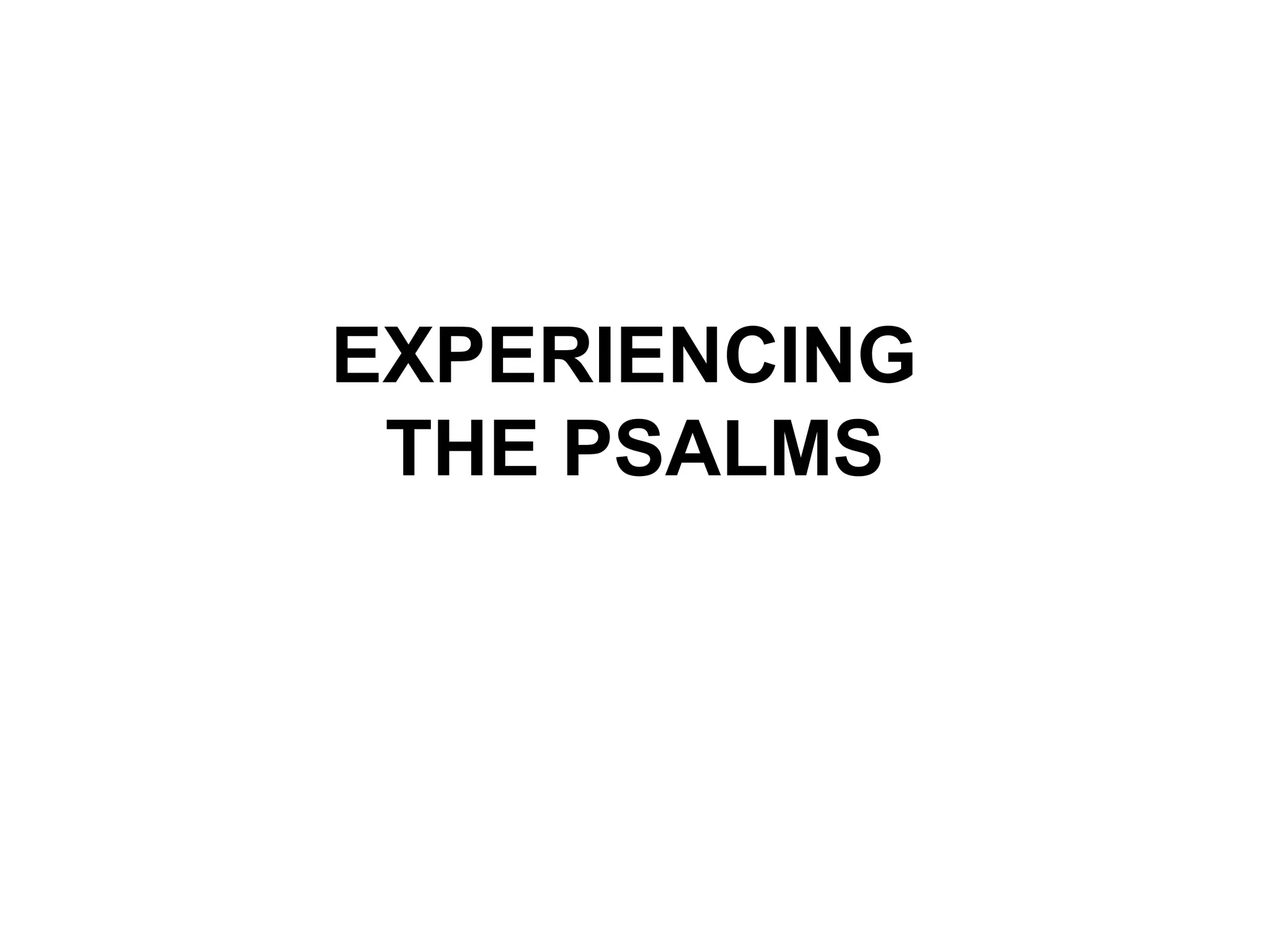This document provides an overview of psalms and Hebrew poetry. It discusses that psalms were originally songs of praise and poetry in the Bible. Psalms express a wide range of human emotions and are prayers and praise to God. Hebrew poetry differs from Western poetry in that it does not rely on rhyme but uses thought parallelism between lines and imagery. There are various categories of psalms including hymns, laments, thanksgiving psalms, and more. Many psalms are attributed to authors like David, Asaph, the Sons of Korah, and others. The document also examines features of Hebrew poetry like parallelism, imagery, acrostics, and more. It provides examples and homework assignments analyzing specific psalms.




















![CLASS EXERCISE
• Psalm 46
– Different lines (mono, bi, tri cola [colon])
• Similes in Psalms 52, 83](https://image.slidesharecdn.com/experiencing-1-1328130166-phpapp01-120201150412-phpapp01/75/Experiencing-the-Psalms-21-2048.jpg)